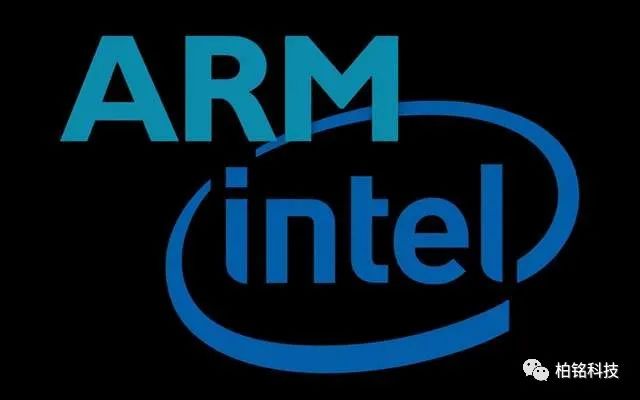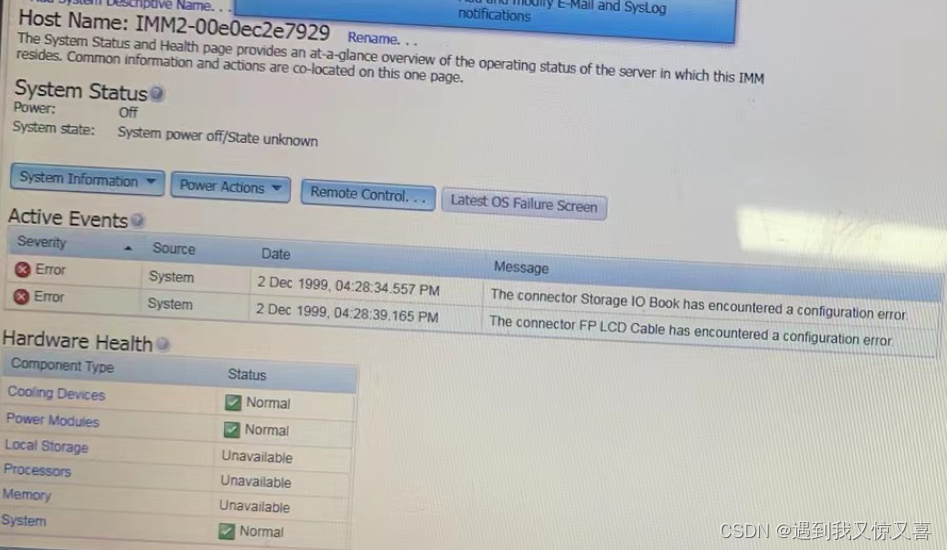android 联系人搜索算法的确有点小复杂,最近研究了好多时日,才将它实现。需要完整的javaT9算法的请联系我,qq:715216366 验证信息:湖北枣阳,注意哦,要收取些很小很小的费用以表共享。
T9输入法,名字听起来陌生,可是大家却经常使用它。可以说T9输入法是输入法历史中的一次革命。至少自T9输入法开始,输入法有长足的进步。
如图手机中九个数字键。26个英文字母被分配到2至9这8个数字键上。以前想输入英文单词的时候总是需要连续多次按某个键,才能得到目标字母。比如想输入“hello”,就需要按两次4,两次3,三次5,三次5,三次6.输入一个单词需要数十次的按键,更何况还有经常按错的情况。编辑一条短信非常麻烦。
T9输入法很好的解决了这一问题。用户利用9个数字键输入非常杂的英文单词并且不用重复按某个字符。系统将会根据已有词库找出可能性最大的单词。例如,目标单词为“hello”,只需输入4,3,5,5,6即可,系统会自动过滤掉不合法的单词如“gdjjm”。排除非法单词,只考虑合法单词,这样大大加速了输入速度。
然而这只是第一步,因为每次输入数字之后,可能有多个候选单词前缀与此匹配。这就需要按可能性提供可能性最大的(最常用)的英文单词。比如系统已知两个单词:"idea","hello"。idea最常用(可能度最高)。那么当依次输入4,3,5,5,6时,对于每次按键系统给出的候选单词应该是:
i (4)
id (3)
hel (5)
hell (5)
hello (6)
这样的话,通过T9输入法就可以大大提高输入速度和简洁度。
如何实现T9输入法呢?
(1)建立词库
将大量单词储备起来便于快速查找,字典树无疑是很好的选择。每个节点将存储此前缀的可能度,结构如下:
- /*
- * 字典树
- */
- public class Trie {
- public Node root = new Node();//字典树根节点
- public class Node{
- public int probablity;
- public Node[] next;
- public Node() {
- this.probablity = 0;
- next = new Node[26];
- }
- }
- public void insert(String str, int probablity){
- Node p = root;
- int i = 0;
- for(i = 0; i < str.length(); i++){
- if(p.next[str.charAt(i) - 'a'] != null){
- p = p.next[str.charAt(i) - 'a'];
- p.probablity += probablity;
- } else {
- Node q = new Node();
- q.probablity = probablity;
- p.next[str.charAt(i) - 'a'] = q;
- p = p.next[str.charAt(i) - 'a'];
- }
- }
- }
- public int search(String str){
- Node p = root;
- int i = 0;
- for(i = 0; i < str.length(); i++){
- if(p.next[str.charAt(i) - 'a'] != null){
- p = p.next[str.charAt(i) - 'a'];
- } else {
- return 0;
- }
- }
- return p.probablity;
- }
- }
(2)查找
建立好的字典树,每个节点最多有26个孩子分别代表下一个字符。当给出一个查找串“43556”的时候,利用广度优先遍历来搜索长度x的所有前缀的可能度。找出最大的即可。广搜的时候要用到队列。
举例模拟过程:
当输入4(g,h,i)之后,通过字典树遍历发现只有"h","i",找出可能读最大的输出(i),并将h,i都入队。
输入3(d,e,f)后,拿出队列中的"h",分别组成"hd","he","hf",去字典树中查,将其中合法串入队,记录最大可能度对应串。再将h出队。对"i"做同样操作。最终找出最大的可能读最大串。
……
可以看出广搜的过程中大量剪枝,以及常用单词的长度最多不过十几个字母。所以字典树的深度也是十几,加上大量剪枝,性能还不错。
- static int[][] ref = { //手机键盘数字-字母映射表
- {0},
- {0},
- {3, 0, 1, 2},//按钮2,三个字母a,b,c
- {3, 3, 4, 5},
- {3, 6, 7, 8},
- {3, 9, 10, 11},
- {3, 12, 13, 14},
- {4, 15, 16, 17, 18},
- {3, 19, 20, 21},
- {4, 22, 23, 24, 25}
- };
- public static Queue<String> queue = new LinkedList<String>(); //用于广度优先遍历过程中的队列
- public static Trie trie; //字典树
- public static void BFS(String str){
- queue.clear();
- queue.offer("");
- int i = 0;
- for(i = 0; '1' != str.charAt(i); i++){
- int max_probablity = 0; //最大可能性值
- String probaStr = "";
- int pre_amount = queue.size(); //队列中之前串的个数
- int j = 0;
- for(j = 0; j < pre_amount; j++){
- int k = 0;
- String preStr = queue.peek();
- for(k = 1; k <= ref[str.charAt(i) - '0'][0]; k++){
- String tempStr = preStr.concat((char)(ref[str.charAt(i) - '0'][k] + 97) + "");
- if(trie.search(tempStr) > 0){
- queue.offer(tempStr);
- }
- if(trie.search(tempStr) > max_probablity){
- max_probablity = trie.search(tempStr);
- probaStr = tempStr;
- }
- }
- queue.poll();
- }
- if("".equals(probaStr)){
- break;
- } else {
- System.out.println(probaStr);
- }
- }
- while('1' != str.charAt(i++)){
- System.out.println("MANUALLY");
- }
- }
思考:
1.以上模拟过程只是给出最大可能度的串,也可以按可能度将所有匹配串按顺序都给出,然后由用户选择。
2.感觉T9输入法打破了之前输入法的僵局,虽然只是用在手机输入。但是个人认为当前流行的智能键盘输入法也采用了类似的处理。比如利用搜狗输入法依次输入"hao""zi""wei""zhi"
给出的最大候选依次为:“好”“耗子”“好滋味”“好自为之”。是不是有点T9输入法的味道?如果有兴趣的话可以交流讨论!
这个题就是实现T9输入法。T9在手机上很常见,是为了方便在数字键盘上输入英文字母而发明的输入法。打汉字一般都用拼音,而拼音都是用英文字母输入的,所以T9对提高中文输入效率也很有帮助。这个题要实现的,是T9的智能英文输入,要输入idea,就不必按3下4,1下3,2下3,1下2了,直接按4332就能打出来,确实就方便了不少
本题先输入一个单词表,包括单词以及该单词的权值。然后输入一些数字串,要求模拟手机输入的过程,每输入一个数字,就输出对应的单词(如果没有对应的就输出MANUALLY),如果输入的数字会对应不同的单词的前缀,就输出权值之和最高的前缀(如果权值一样就按字母表顺序)。用Sample来说明,输入了hell,hello,idea这3个单词,权值对应分别为3,4,8,开始输入数字:输入4,4可以对应i和h,i是idea的前缀,权值之和为8,h是hell和hello的前缀,权值之和是3+4=7,输出权值较大的i;继续输入3,43对应的可以是he和id,同样因为id的权值大于he,就输出id;接下来输入5,435就只能对应hel了……依此类推,每次输出的都是权值之和最高的词
分析:本题的关键就是要找出权值之和最高的单词前缀,这就会想到trie树了,这是解决字符串前缀问题的好办法,构造树的方法见我的代码。要注意的是,输入的是数字,而一个数字可以对应多个字母,需要有一个比较的过程,把权值最大的字母输出来。我这里用java的PriorityQueue优先队列来完成这个操作,优先的规则是层次从小到大,权值从大到小,字母表顺序
我一开始没有用优先队列,用的是贪心,每次选择权值最大的字母输出,结果WA了一次,是没考虑到每次只选最大的,会有可能在后面找到的并不是权值最大的前缀。在discuss里面看到一组数据:
3
abyb 3
abye 13
aaza 4
1
22921
才发现我错得跟他一样,输出的是
a
ab
aby
abyb
但正确的结果应该是
a
ab
aby
aaza
每个可能的结点都要扩展,并按照前面所述的原则加入到优先队列之中。使用BFS进行层次遍历。在优先队列中,每一层的第一个结点的字母就是符合要求的。我在结点类node中加入了一个属性father标记父结点,在遍历过程中获取每一层的第一个结点后,就利用father属性将结果反推出来然后输出
现在开始用java交题,觉得java还是蛮爽的,有这么多现成的类可以拿来用,eclipse的代码编辑能力也比dev c++,VC6之类的要强得多了。虽然执行效率没C/C++高,但能更快过题的java也不失为一个好语言。用gvim生成了一个分色的代码,就贴在下面了,内存4464K时间485MS
import java.util.Comparator;
import java.util.HashMap;
import java.util.PriorityQueue;
import java.util.Scanner;
class node {
char ch;// 字符
int val;// 权值
int lv;// 层次
node father;// 父结点
HashMap<Character, node> next;
node(char ch, int val, int lv, node father) {
this.ch = ch;
this.val = val;
this.lv = lv;
this.father = father;
next = new HashMap<Character, node>();
}
node() {
next = new HashMap<Character, node>();
lv = 0;
}
}
class trie {
private static char t9[][] = { {}, {}, {'a','b','c' }, {'d','e','f' }, {'g','h', 'i' }, {'j','k','l' }, {'m','n','o' }, {'p','q', 'r','s' }, {'t','u','v' }, {'w','x','y', 'z' } };
node root = null;
public void add(String str, int val) {
node curr = root;
for (int i =0; i < str.length(); i++) {
char ch = str.charAt(i);
// 没有结点就建立结点
node next;
if ((next = curr.next.get(ch)) ==null) {
curr.next.put(ch, new node(ch, val, curr.lv +1, curr));
curr = curr.next.get(ch);
} else {
curr = next;
curr.val += val;
}
}
}
public void find(String num_str) {
int length;
int num[];
// 找出1的位置,确定结束点
int one_pos = num_str.indexOf('1');
if (one_pos < 0) {
length = num_str.length();
} else {
length = one_pos;
}
// 字符转换为数字
num = new int[length];
for (int i =0; i < length; i++) {
num[i] = num_str.charAt(i) - '0';
}
// 建立优先队列
PriorityQueue<node> pq = new PriorityQueue<node>(26,new Comparator<node>() {
// 优先规则:层次从小到大,权值从大到小,字母表顺序
public int compare(node a, node b) {
if (a.lv == b.lv) {
if (a.val == b.val) {
return a.ch - b.ch;
} else {
return b.val - a.val;
}
} else {
return a.lv - b.lv;
}
}
});
// 把根加入队列
pq.add(root);
// 对trie树进行BFS遍历
int lv = 0;
while (pq.size() > 0) {
// 把所有可能接下来的结点列出,加入队列
node curr = pq.poll();
// 反推结果
if (curr.lv > lv) {
char res[] = new char[curr.lv];
node c = curr;
while (c != root) {
res[c.lv - 1] = c.ch;
c = c.father;
}
System.out.println(res);
lv++;
}
if (lv < num.length) {
int dig = num[curr.lv];
for (int i =0; i < t9[dig].length; i++) {
node next;
if ((next = curr.next.get(t9[dig][i])) !=null) {
pq.add(next);
}
}
}
}
// 填空
for (int i = lv; i < length; i++) {
System.out.println("MANUALLY");
}
}
trie() {
root = new node();
}
}
public class Main {
public static void main(String[] args)throws Exception {
Scanner cin = new Scanner(System.in);
int cas = cin.nextInt();
for (int th =1; th <= cas; th++) {
System.out.printf("Scenario #%d:\n", th);
// 对每一个测试用例建立一棵trie树
trie tr = new trie();
int w = cin.nextInt();
while (w-- > 0) {
tr.add(cin.next(), cin.nextInt());
}
int m = cin.nextInt();
while (m-- > 0) {
String src = cin.next();
tr.find(src);
System.out.println();
}
System.out.println();
}
}
}
/**
* 摘要:T9拼音输入法模块
* 描述:像手机键盘一样数字键和字母键复用,一个按键上有三或四个英文字母,
* 在输入拼音时选择需要的字母来组成拼音,T9只需输入该字母所在的按键一次,
* 程序自动组成合理的拼音,大大减少了输入时按键的次数,能够大大提高输入法的效率。
* 模块:char * t9PY_Get(char (*GetKey)(void))
* 传入读取键值函数,返回汉字首地址
* A&T:Lzy 2012-1-6
*/
#include <string.h>
#include <stdio.h>
#include "py_mb.h"
#include "t9py_indexa.h"
#include "ty_config.h"
char chinese_word[3];
const struct t9PY_index * cpt9PY_Mb[16];//主要用于存放匹配的拼音码表地址,只有cpt9PY_Mb[0]存放的是一个不匹配的拼音码表地址.
//匹配并不是指相比较的字符长短一样,不是完全匹配.例如:34跟346是匹配的,34跟34是完全匹配(在这里我们不需要使用完全匹配)
//========================================================================
// 语法格式: char T9PY_Get_Match_PY_MB(char *p_PadInput,struct t9PY_index code ** List_match_PY_Mb)
// 实现功能: 获取与输入相匹配的T9拼音列表
// 参数: p_PadInput 输入的按键序列,由'0'~'9'组成的字符串
// List_match_PY_Mb 存储"获取到的拼音索引地址"的数组
// 返回值: 获取到完全匹配拼音数量
// 移植注意: List_match_PY_Mb所指向的存储结构,即用于存放匹配的拼音码表地址的存储结构
//========================================================================
char T9PY_Get_Match_PY_MB(char *p_PadInput,const struct t9PY_index **List_match_PY_Mb)
{
const struct t9PY_index *p_PY_CurrenIndex,*p_PY_LastIndex,*p_PY_TempIndex;
char i,j,cInputStrLength;
char T9PY_Match_NUM=0; //完全匹配拼音数量
j=0; //j为匹配最大值
if(*p_PadInput == '\0')
return(0); //如果输入空字符返回0//
cInputStrLength=strlen(p_PadInput); //获取输入拼音串长度//
p_PY_CurrenIndex = &(t9PY_index2[0]); //首索引地址赋值,p_PY_CurrenIndex为当前拼音索引地址
p_PY_LastIndex = t9PY_index2+sizeof(t9PY_index2)/sizeof(t9PY_index2[0]); //最后索引地址之后的地址(作下一语句比较用)
while(p_PY_CurrenIndex < p_PY_LastIndex) //遍历字母索引表.或者使用语句: while((p_PY_CurrenIndex->t9PY_T9[0])!='\n')
{
for(i=0;i<cInputStrLength;i++)
{
if(*(p_PadInput+i) != *((*p_PY_CurrenIndex).t9PY_T9+i)) //检查是否匹配
{
if (i+1 > j)
{
j=i+1; //j为不匹配字符串中前面字符匹配的最大值,例如:被比较字符串(键盘输入的字符串)为985,相比较的2个字符串(码表索引里面的字符串)为983和953,则j=2
p_PY_TempIndex=p_PY_CurrenIndex;
}
break; //不匹配,退出//
}
}
if((i==cInputStrLength) && (T9PY_Match_NUM<16)) //匹配,最多16组.匹配并不是指相比较的字符长短一样,不是完全匹配
{
List_match_PY_Mb[T9PY_Match_NUM]=p_PY_CurrenIndex;//
T9PY_Match_NUM++;
}
p_PY_CurrenIndex++;
}
if(j!=cInputStrLength) //不匹配但最多匹配字符的1组
List_match_PY_Mb[0]=p_PY_TempIndex;//
return (T9PY_Match_NUM); //输出完全匹配组数,0为无果而终//
}
/**
* 功能:获取汉字
* 输入:传入读取键值函数
* 返回:汉字保存的首地址
*/
char * t9PY_Get(char (*GetKey)(void))
{
int PYEnter=0; /* 标识汉字是否已经输入 */
int HZok=0;
int flag = 1; /* 标记数组中汉字是否显示完毕 */
char cpt9PY_Mblen;
unsigned char temp, all;
unsigned char t9PYn = 0; /* 当前的第几个拼音 */
char in_line[16] = {0x00}; /* 存放依次从键盘输入的字符组成的字符串 */
char tempchar,Add=0,i=0;
const struct t9PY_index *cpTemp;
chinese_word[2]='\0';
while(!HZok)
{
tempchar = (*GetKey)(); /* 读取键值 */
switch (tempchar)
{
case key0:
case key1:
case key2:
case key3:
case key4:
case key5:
case key6:
case key7:
case key8:
case key9:
if (~PYEnter) //没有按下确定键,则字符存入in_line中,根据此字符串,获得节外匹配的拼音
{
in_line[i]=tempchar; /* 存入字符 */
i++;
Add = 0;
cpt9PY_Mblen = T9PY_Get_Match_PY_MB(in_line, cpt9PY_Mb);
if(cpt9PY_Mblen==0) /* 输入没有相应的拼音 */
goto del;
}
break;
case kleft: /* 前一拼音 */
if (t9PYn > 0)
t9PYn--;
break;
case kright: /* 后一拼音 */
t9PYn++;
if (t9PYn >= cpt9PY_Mblen) t9PYn --; /* 判断是否已到最后一个拼音 */
break;
case PageUp: /* 前翻页 */
if (Add >= 12) Add -= 12; /* 前6个汉字*/
break;
case PageDown: /* 后翻页 */
if (Add < strlen((*cpTemp).PY_mb) - 12)
Add += 12;
break;
case kdel: /* 删除前一个字筗 */
del: if (i>0)
{
i--;
in_line[i]=0x00;
Add=0;
cpt9PY_Mblen = T9PY_Get_Match_PY_MB(in_line, cpt9PY_Mb);
}
break;
case kenter: //输入状态和选字状态切换
PYEnter ^= 1;
break;
default :
break;
}
if (PYEnter)
{
cpTemp=cpt9PY_Mb[t9PYn]; /* 获得当前拼音 */
printf ("\n选字:");
tempchar = (*GetKey)(); /* 获得要选的数字 */
if((cpTemp != PY_mb_space) && (tempchar>='1') && (tempchar<='6'))
{
HZok=1; /* 改变循环条件,到这里汉字已选上 */
t9PYn=0; /* 清除拼音标记变量 */
/* 判断输入的数字在否大于汉字个数 */
while(strlen((*cpTemp).PY_mb) < strlen((*cpTemp).PY_mb+(Add/2)*2+(tempchar-'0')*2+1))
tempchar = (*GetKey)();
chinese_word[0]=*((*cpTemp).PY_mb+(Add/2)*2+(tempchar-'0')*2+1);
chinese_word[1]=*((*cpTemp).PY_mb+(Add/2)*2+(tempchar-'0')*2+2);
return (chinese_word); /* 返回获得的汉字*/
}
}
else
{
printf ("\n拼音: ");
for (temp=t9PYn;temp<cpt9PY_Mblen; temp++) /* 输出所有拼音*/
{
cpTemp=cpt9PY_Mb[temp];
printf ("%s ",(*(cpTemp)).PY);
}
cpTemp=cpt9PY_Mb[t9PYn];
printf ("\n汉字: ");
for(temp = 0; temp < 6; temp++) /* 显示当前拼音的基于页(Add)前6个汉字 */
{
//Add除于2后又乘于2的作用是为了获得偶数(因为拼音码表首字符是'@'而不是汉字)
chinese_word[0]=*((*cpTemp).PY_mb+(Add/2)*2+temp*2+1);
chinese_word[1]=*((*cpTemp).PY_mb+(Add/2)*2+temp*2+2);
/* 判断汉字是否已全部输出 */
if(chinese_word[0] == 0)
{
flag = 0;
break;
}
printf("%s ",chinese_word);
flag = 1;
}
if(flag) printf("-> "); /* 提示还有汉字没有显示完全 */
}
}
}
/********程序测试部分************/
/* 获取键值 */
char key(void)
{
int key;
scanf("%c",&key);
getchar(); /*获取回车符 */
printf("输入 %c", key);
return key;
}
int main(void)
{
/* char input_string[]="243";
int num, i;
num = T9PY_Get_Match_PY_MB(input_string, cpt9PY_Mb);
for(i = 0; i < num; i++)
printf("%s %s\n",(*(cpt9PY_Mb[i])).PY,(*(cpt9PY_Mb[i])).PY_mb); */
printf("%s\n",t9PY_Get(key)); /* 汉字是两个字符所以需要用字符串方式打印 */
}
//地址;http://blog.chinaunix.net/uid-24219701-id-3066063.html





